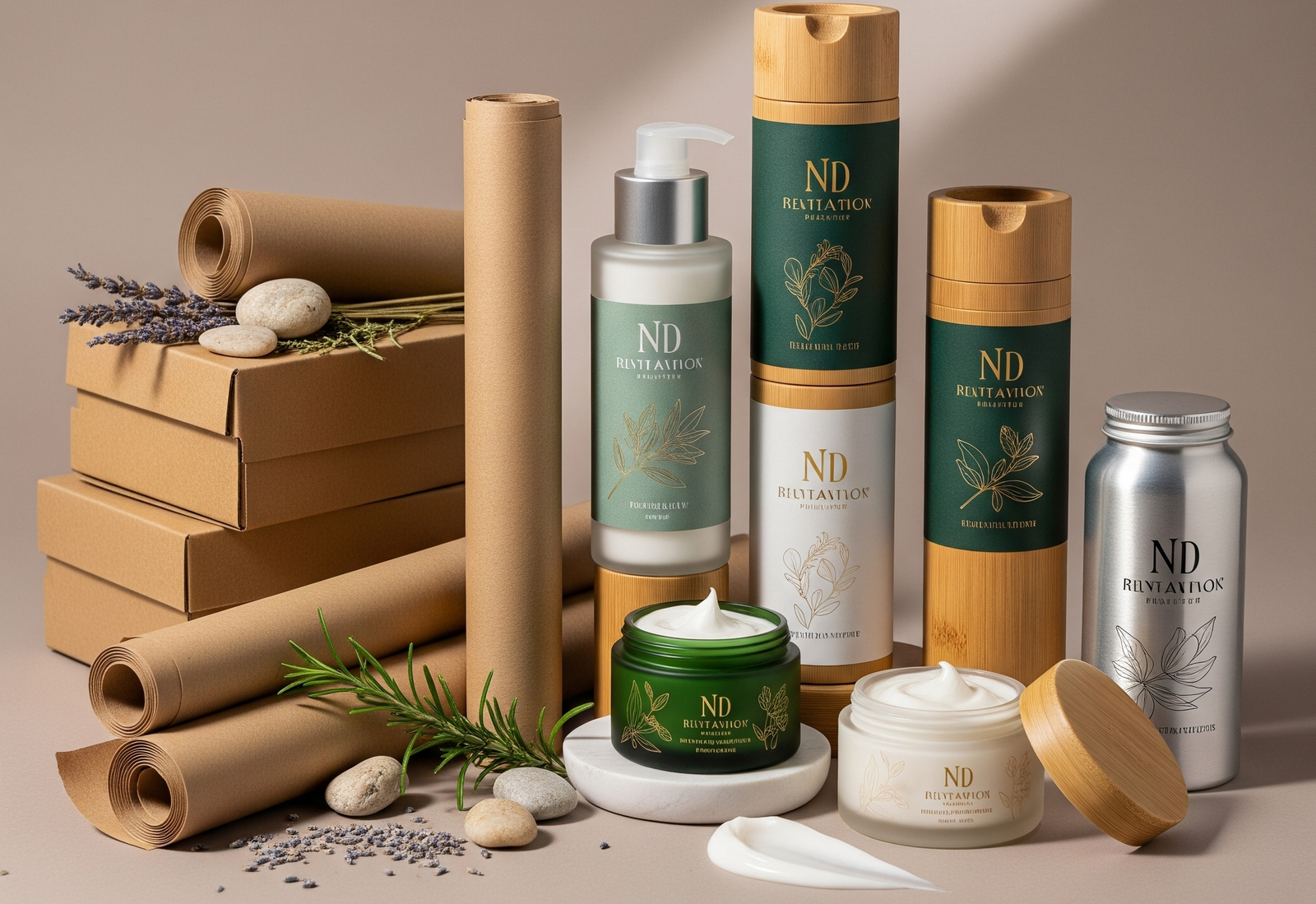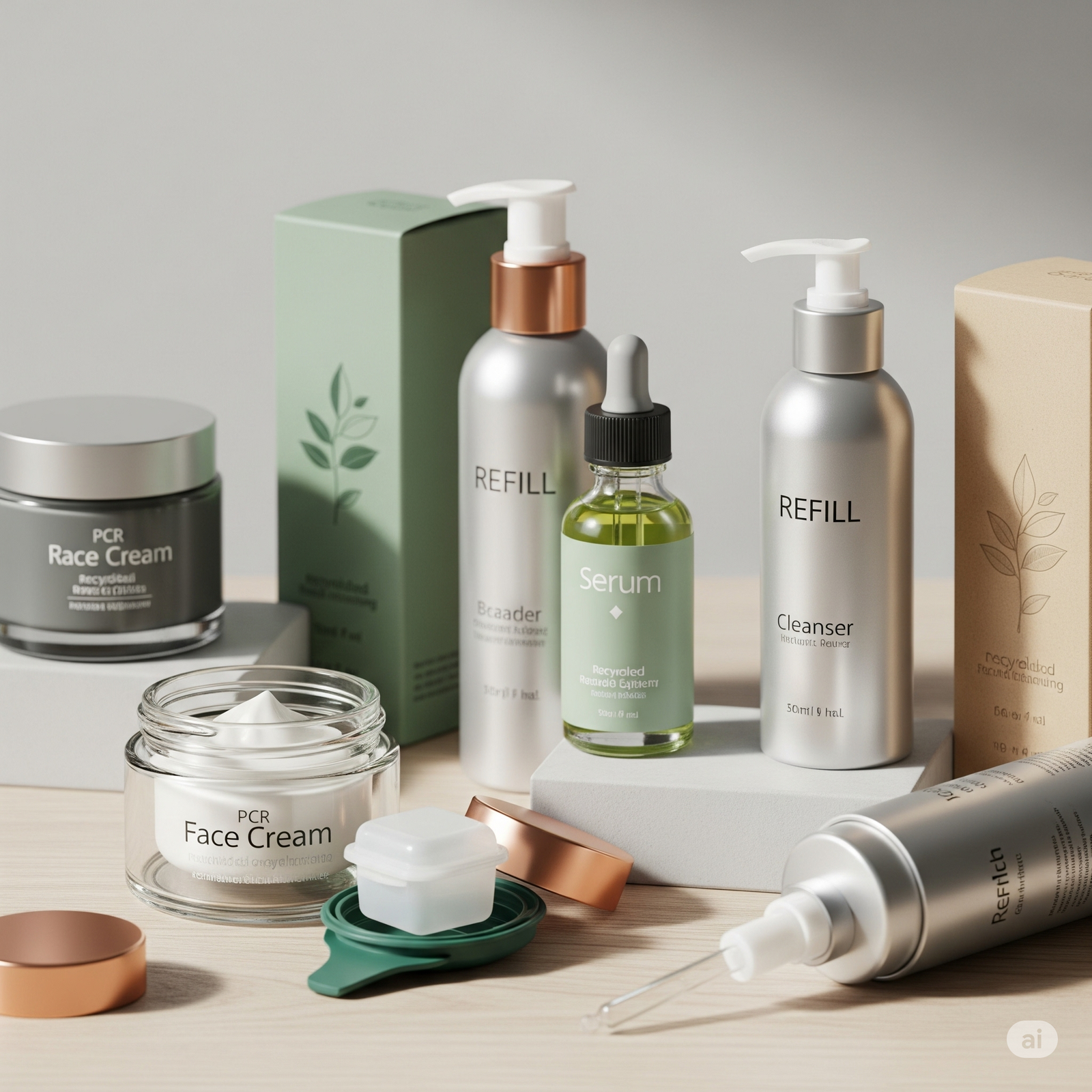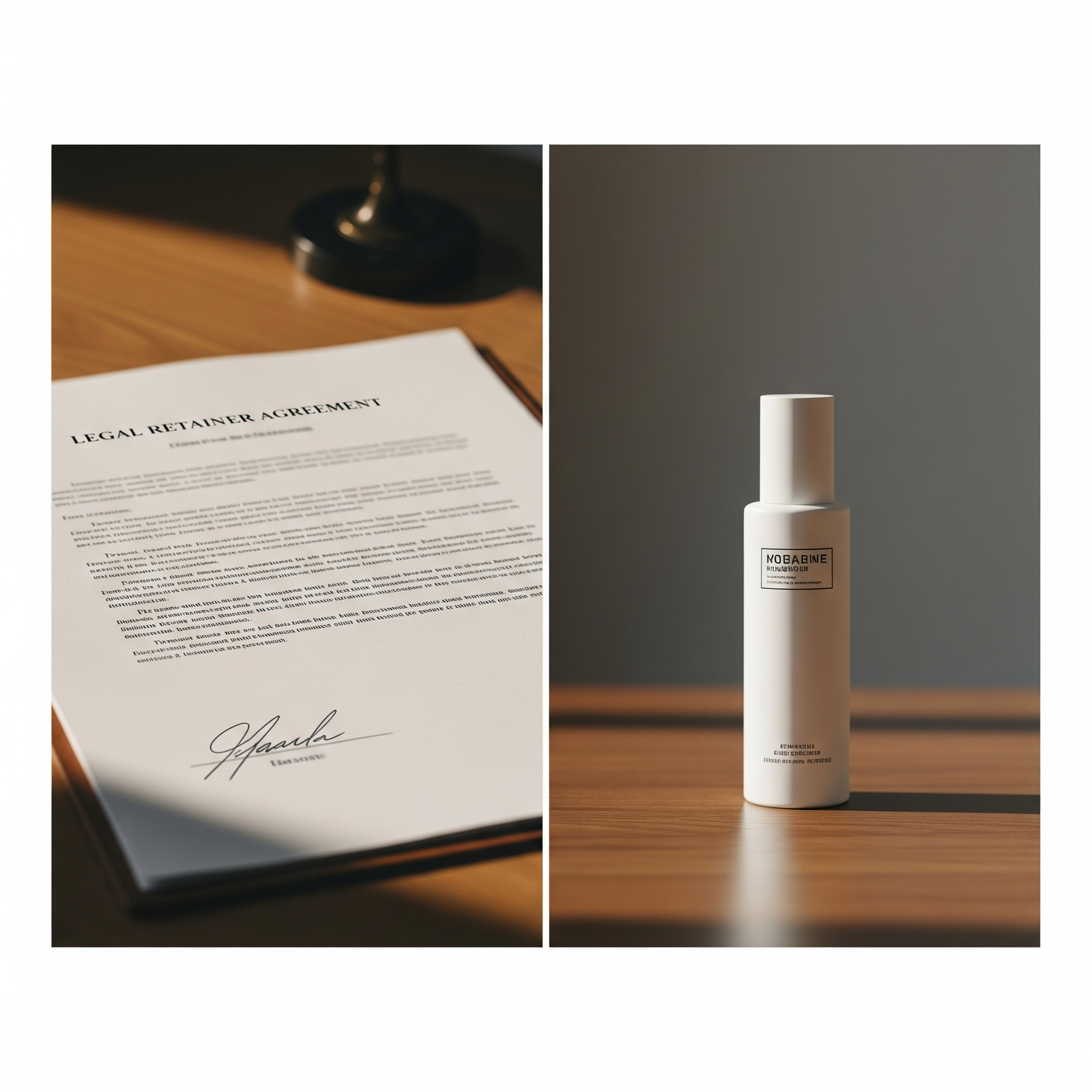Sustainable Packaging That Sells: Eco Meets Aesthetic in 2025
Explore how sustainable beauty packaging in 2025 blends eco materials with aesthetic appeal. Backed by Admigos data on consumer trends and innovation tracking.
01 Aug'25
By Niharika Paswan


Sustainable Packaging That Sells: Eco Meets Aesthetic in 2025
In 2025, beauty consumers are no longer just browsing for the best serum or blush, they're inspecting what it comes in. From biodegradable cartons to refillable glass jars, sustainable beauty packaging has evolved beyond a niche concern into a core brand strategy. What’s changed is not just the material but the mindset.
According to Admigos packaging analytics, various Gen Z and millennial beauty buyers say they actively consider sustainability when purchasing a new product. And it’s not just about checking a box it’s about buying into a value system. The industry’s move toward eco packaging beauty is being driven by a complex mix of environmental urgency, consumer pressure, and design innovation. Brands that deliver on all three are seeing not only stronger sentiment online but higher retention rates and repeat purchases.
From Brown Boxes to Brand Stories

Gone are the days when “sustainable” meant bland kraft paper and generic green labels. Today, sustainable beauty packaging needs to be visually magnetic and ethically designed. Admigos tracked over several beauty campaigns across Instagram, TikTok, and D2C sites and found that story-driven eco packaging beauty outperformed generic claims over high percentage engagement.
What does story-driven mean?
- Explaining the packaging journey (e.g., “This tube is made from sugarcane bioplastic, sourced from renewable farms in Brazil.”)
- Embedding product meaning into the form (e.g., a lip balm tin designed to be refilled as a charm or necklace)
- Turning sustainability into ritual (e.g., refill pouches that arrive with planting seeds as part of an Earth Month campaign)
When sustainability meets narrative, consumers aren’t just impressed they become invested.
Material Matters: What’s Trending in 2025
Admigos data indicates the top-performing sustainable packaging choices this year fall under three primary categories: biodegradable, refillable, and recyclable hybrid formats.
1. Biodegradable Innovations
Biodegradable materials like mushroom mycelium, seaweed films, and molded pulp are now being adapted into secondary packaging and sampling formats. Loli Beauty, for instance, used compostable bags for its trial sizes, while One Ocean Beauty experimented with marine-safe dissolvable sachets. Consumer sentiment around such innovations, tracked via Admigos’ comment analysis tools, skews highly positive especially when brands are transparent about testing conditions and disposal guidance.
2. Refillable Systems
Refillables are no longer clunky or niche. Brands like Fenty Skin and Charlotte Tilbury have streamlined the refill ritual into an intuitive and beautiful process. Admigos packaging analytics found that brands with clearly marked, easy-to-use refill systems saw an increase in repeat site visits post-purchase.
The most successful formats share key traits:
- Twist-and-lock or magnetic closures.
- Transparent refill instructions on pack or QR-linked.
- Aesthetic continuity across original and refill versions.
3. Hybrid Materials
In 2025, many beauty brands have moved toward hybrid packaging that combines recycled plastics, paperboard, and bio-based polymers to balance shelf presence with sustainability. While not always compostable, these formats reduce virgin material use and are often easier to scale. Admigos benchmark data reveals that hybrid packages labeled with clear sustainability claims, outperform unmarked versions in click-through rates from social ads to product pages.
Admigos: Turning Sentiment into Strategy
Sustainable beauty packaging may look great on a shelf, but does it convert? That’s the question Admigos helps brands answer. As an intelligence engine built specifically for beauty marketing, Admigos doesn’t just track likes or packaging specs. It integrates real-time data from influencer unboxings, shopper reviews, affiliate conversions, and digital sentiment to build actionable insights around what packaging choices actually move the needle.
Here’s how Admigos supports D2C brands on the sustainability front:
- Consumer Sentiment Mapping Admigos tracks variables in packaging-related comments, DMs, and reviews from “bulky” and “too much plastic” to “aesthetic” and “reusable” to uncover recurring praise or friction.
- A or B Testing on Format Performance Run side-by-side comparisons of product in refill pouch vs. standard bottle format and measure impact on UGC, reorder rates, and time-on-page.
- Eco-Claim Authenticity Monitoring With rising scrutiny around greenwashing, Admigos helps brands validate sustainability narratives with third-party citations and material origin transparency.
- Unboxing with Post-Purchase Analytics Admigos links post-purchase reviews and social uploads to packaging triggers, revealing if elements like seed paper inserts or reusable jars actually result in user-generated buzz.
In short, Admigos goes beyond guesswork and aesthetic hype to tell brands what eco innovations matter to their specific audiences. Sathyabama releases a detailed study analyzing consumer behavior and preferences around cosmetic product purchases.
How Leading Brands Are Winning with Sustainable Beauty Packaging

1. Caudalie: Known for its grape-powered skincare, Caudalie transitioned many of its products to eco-conscious aluminum and glass with paperboard outers. Admigos tracked a rise in positive sentiment tied to their refill pod launch for the Premier Cru Cream.
2. REN Clean Skincare: Early adopters of PCR plastics, REN added recycling instructions and a partnership with Terracycle. Admigos sentiment tracking showed “trust” and “transparent” recurring in over 2,000 TikTok and Instagram comments.
3. Love Beauty and Planet: Their biodegradable sachet innovation trialed in Southeast Asia performed exceptionally, especially among Gen Z consumers. Admigos heatmap data revealed spikes in site engagement on launch week, especially from regions with plastic waste bans.
Pebble breaks down what sustainable beauty really means and shares practical tips for building a clean, eco-conscious beauty routine.
Building Eco-Driven Packaging That Converts
If you’re designing a sustainable packaging system that’s both eco-minded and conversion-ready, here are three proven strategies that have emerged in 2025:
1. Design for Unboxing, Not Just Shelves
Visual storytelling is no longer confined to in-store displays. Admigos data confirms that unboxing aesthetics on Reels influence of first-time buyer decisions in beauty.
Try:
- Printed QR codes inside packaging that lead to disposal or refill instructions
- Embossed messages under caps or inlays that reinforce brand values
- Camera-friendly textures and forms for shareable content
2. Think Refills Beyond Function
Refills are great but ritualizing them works even better. Admigos studied brands that turn refill moments into emotionally resonant ones (like monthly rituals or seasonal swaps) and found stronger retention and email open rates.
Try:
- Limited-edition refill sleeves in seasonal designs
- Email reminders tied to refill anniversaries
- Campaigns encouraging customers to share their “refill shelfie”
3. Communicate Material Journeys
Not every consumer will know what bio-based HDPE or FSC certification means. Admigos testing shows that brands who simplify this information via visuals or metaphors get higher clarity scores and conversion rates.
Try:
- Infographic leaflets explaining the lifecycle of your packaging
- Short video loops on product pages about where your materials come from
- Icons that make disposal or recycling steps crystal clear
Challenges Ahead and What to Watch
Even with the momentum, sustainability in beauty packaging faces hurdles. Admigos analytics highlight a few friction points brands should address transparently:
- Lack of Infrastructure: Not all compostable packaging can be composted at home. Clarify what type of disposal your materials need.
- Cost-to-Scale Issues: Glass or aluminum formats are beautiful but heavy and expensive to ship. Brands must balance aesthetics with logistical realities.
- Greenwashing Risk: In a rush to appear eco-conscious, vague terms like “natural,” “clean,” or “eco” are losing meaning. Consumers expect proof.
Admigos helps brands not just avoid these pitfalls but use them as moments to build deeper trust.
Why Eco Packaging Beauty Is No Longer Optional
Sustainability is not just a buzzword in 2025, it’s a brand differentiator, a retention driver, and a viral storytelling tool. Consumers don’t just want products that work. They want products that mean something, down to the cap and carton. Admigos continues to analyze how packaging touches the full funnel from ad click to shelfie and why what’s outside the bottle is just as critical as what’s inside.
Brands that embrace this shift and back it with real strategy, data, and design won’t just help the planet. They’ll win customers for life.
Go eco. Go aesthetic. And go smart with Admigos.
— By Niharika Paswan
Navigating Influencer Fraud: How to Protect Your Beauty Brand
Protect your brand from influencer fraud with smart detection tools. Learn how Admigos helps beauty brands vet creators, spot fake followers, and drive real ROI.

The Ultimate Guide to Choosing a Beauty Marketing Retainer in 2025
A blueprint for beauty brands to find, vet, and secure agency retainers that drive ongoing growth and ROI.
